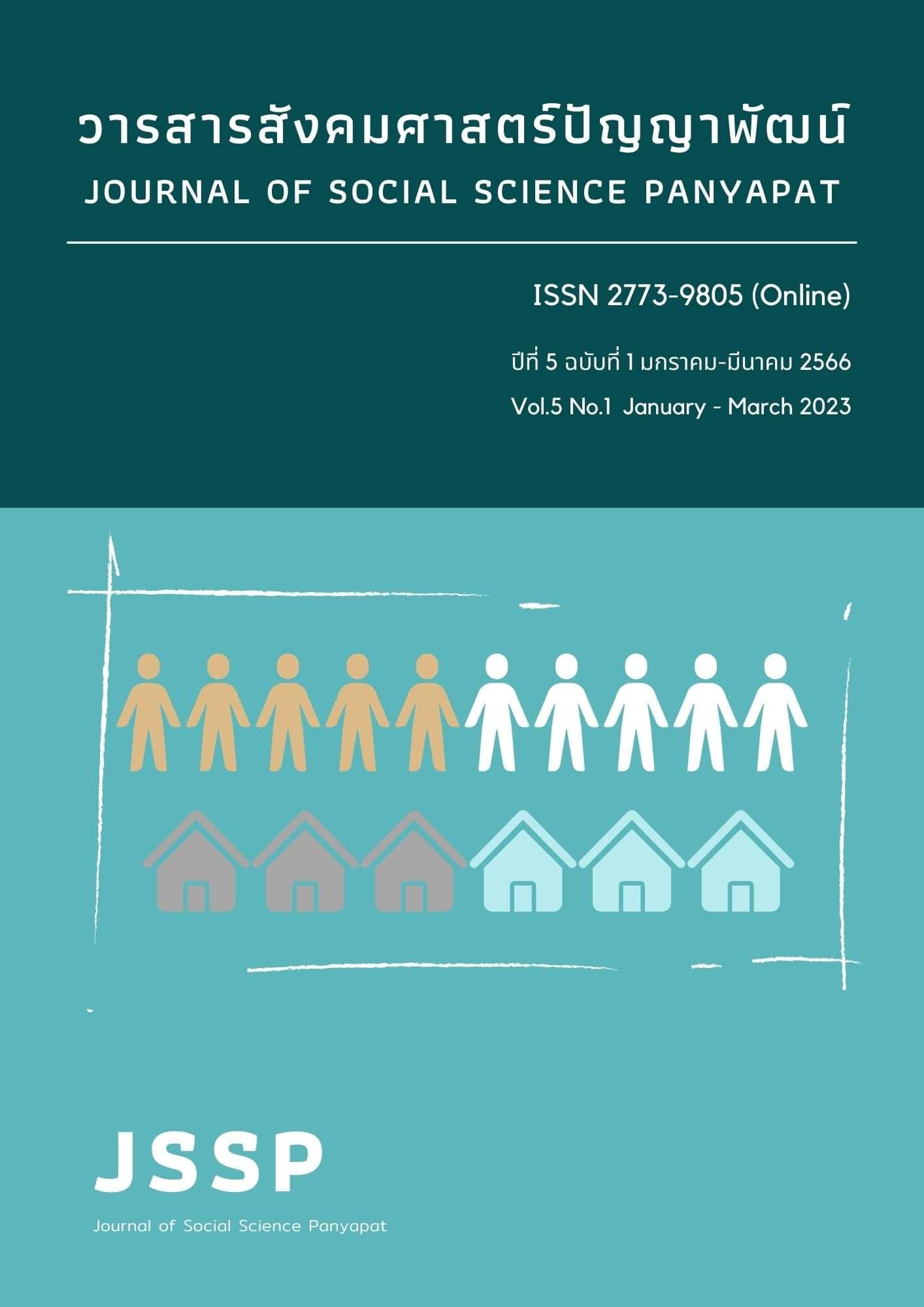การวิเคราะห์ประสิทธิภาพทางเทคนิคของสหกรณ์ออมทรัพย์ครูในประเทศไทย
คำสำคัญ:
ประสิทธิภาพเชิงเทคนิค, ประสิทธิภาพสหกรณ์, สหกรณ์ออมทรัพย์ครูบทคัดย่อ
บทความวิจัยนี้มีจุดประสงค์เพื่อ (1) วัดประสิทธิภาพในการดำเนินงานของสหกรณ์ออมทรัพย์ครูในประเทศไทย และ (2) วิเคราะห์การเปลี่ยนแปลงในผลิตภาพและประสิทธิภาพการดำเนินงานของสหกรณ์ในช่วงระหว่างปี 2554–2563 ผู้วิจัยได้ศึกษาแนวคิดโดยได้ทำการวิเคราะห์สหกรณ์ตัวอย่างจำนวน 92 แห่ง โดยใช้ตัวแปรปัจจัยการผลิต ประกอบไปด้วย เงินรับฝากจากสมาชิก ค่าใช้จ่ายในการดำเนินงาน และทุนของสหกรณ์ และตัวแปรปัจจัยผลผลิต ประกอบไปด้วย ลูกหนี้เงินให้กู้ทั้งสิ้น รายได้ทั้งสิ้น และเงินลงทุนทั้งสิ้น โดยการวิเคราะห์ข้อมูลด้วยวิธี Data Envelopment Analysis (DEA) ผลการศึกษา พบว่า ประสิทธิภาพในการดำเนินงานของสหกรณ์ออมทรัพย์ครูในประเทศไทยตามตัวแบบผลตอบแทนต่อขนาดคงที่ (CRS) มีสหกรณ์ที่มีค่าประสิทธิภาพสูงสุดคงที่เท่ากับ 1 จำนวน 4 สหกรณ์ คิดเป็น 4.35% ในภาพรวมมีค่าประสิทธิภาพโดยเฉลี่ยเท่ากับ 0.691 ในส่วนตามตัวแบบผลตอบแทนต่อขนาดผันแปร (VRS) มีสหกรณ์ที่มีค่าประสิทธิภาพสูงสุดคงที่เท่ากับ 1 จำนวน 9 คิดเป็น 9.78% ในภาพรวมมีค่าประสิทธิภาพโดยเฉลี่ยเท่ากับ 0.776 โดยจากปี 2554 – 2563 จำนวนสหกรณ์ที่มีประสิทธิภาพมีแนวโน้มลดลง การวิเคราะห์การเปลี่ยนแปลงในผลิตภาพและประสิทธิภาพการดำเนินงานของสหกรณ์ โดยใช้ดัชนี Malmquist พบว่า โดยภาพรวมระหว่างปี 2554 - 2563 สหกรณ์ออมทรัพย์ครูในประเทศไทยมีผลิตภาพโดยรวมเฉลี่ยสูงขึ้นร้อยละ 12.30 เมื่อเทียบกับระดับผลิตภาพในปีฐานในปี 2554
เอกสารอ้างอิง
กรมตรวจบัญชีสหกรณ์. (2559). รายงานผลการดำเนินงานและฐานะทางการเงินสหกรณ์ออมทรัพย์. สืบค้น 26 กันยายน 2565. จาก https://www.cad.go.th/ewtadmin/ewt/statistic/download/report_info/59/save_2_59.pdf.
กรมส่งเสริมสหกรณ์. (2564). สหกรณ์ออมทรัพย์. สืบค้น 26 กันยายน 2565. จาก https://www.cpd.go.th/knowledge/general-coop/item/1741-coop-type.html#save.
ฉลิมพร อภิชนาพงศ์. (2545). ปัจจัยที่มีอิทธิพลต่อกำไรของสหกรณ์ออมทรัพย์ (รายงานการวิจัย). กรุงเทพฯ: มหาวิทยาลัยธุรกิจบัณฑิตย์.
ณคุณ ธรณีนิติญาณ. (2563). การวัดประสิทธิภาพทางเทคนิคของสหกรณ์สหกรณ์ออมทรัพย์และสหกรณ์ เครดิตยูเนี่ยนในประเทศไทย. วารสารบริหารธุรกิจ, 43(168), 38-57.
ประสพชัย พสุนนท์. (2558). การประเมินสมรรถนะและประสิทธิภาพการดำเนินงานของสหกรณ์ออมทรัพย์: กรณีศึกษาสหกรณ์ออมทรัพย์สถาบันอุดมศึกษาในเขตกรุงเทพมหานคร. (ปรัชญาดุษฎีบัณฑิต, มหาวิทยาลัยศิลปากร).
ศิริวรรณ อัศววงศ์เสถียร, กันตภณ ศรีชาติ และ รัฐศาสตร์ หนูดำ. (2560). ความเสี่ยงของระบบสหกรณ์ออมทรัพย์กับแนวทางการปฏิรูปการกำกับดูแล. FOCUSED AND QUICK, 114, 1-20.
สิรัลยา จิตอุดมวัฒนา. (2554). หนี้สินของสมาชิกครูในระบบสหกรณ์. สืบค้น 26 กันยายน 2565. จาก https://www.cad.go.th/cadweb_org/ewt_news.php?nid=14319.
Banker, R. D., Charnes, A., & Cooper, W. W. (1984). Some models for estimating technical and scale efficiencies in data envelopment analysis. Management Science, 30(9), 1078–1092.
Caves, D. W., Christensen, L. R., & Diewert, W. E. (1982). The economic theory of index numbers and the measurement of input, output, and productivity. Econometrica, 50(6), 1393–1414.
ดาวน์โหลด
เผยแพร่แล้ว
รูปแบบการอ้างอิง
ฉบับ
ประเภทบทความ
สัญญาอนุญาต
ลิขสิทธิ์ (c) 2023 วารสารสังคมศาสตร์ปัญญาพัฒน์

อนุญาตภายใต้เงื่อนไข Creative Commons Attribution-NonCommercial-NoDerivatives 4.0 International License.


